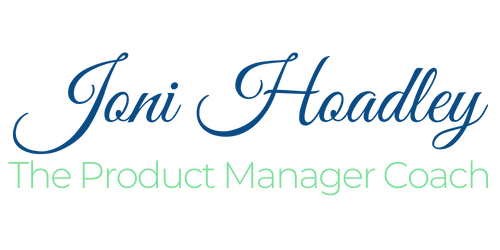You’ve just landed a new product manager role, and the mix of excitement and nerves is palpable. It’s natural to aspire to make an immediate impact, but remember, patience is key. Starting a new product manager job is not just about a change in your job title; it’s a defining moment in your professional journey. This transition period is crucial, and navigating it successfully requires an awareness of common pitfalls and the strategies to avoid them. My “First 90 Days Product Management Coaching Program” is designed to help with this. In this article, I’ll share insights from this program, offering a glimpse into the pitfalls you might face and how to navigate them effectively.
Before we dive into these pitfalls, let’s talk about Rashid (name changed for privacy), a former physical therapist who transitioned into product management a few years ago. Rashid’s journey is a testament to the power of preparation and strategic planning. When he first stepped into the product management world, he was keenly aware of the challenges ahead and reached out to me for guidance. Utilizing the structured approach of my 90-day framework, Rashid avoided common errors that many product managers often encounter. This framework became his go-to strategy each time he embarked on a new role, guiding him through senior product management positions in companies where he spearheaded zero-to-one product development.
Mistake 1: Underestimating the Importance of Building Trust
One of the most critical yet often overlooked aspects of a new product management role is building trust—both within your team and across the organization. When Rashid transitioned into product management, he quickly realized that his technical skills alone weren’t enough. He needed to establish trust to lead and drive his product effectively.
Cultivating Trust through Engagement and Transparency
Building trust starts with genuine engagement with your team members and stakeholders. It’s about listening to their ideas, understanding their concerns, and showing that you value their contributions. Transparency is another key factor. Rashid made it a point to communicate openly about project goals, progress, and challenges. This open dialogue helped him build credibility and foster a collaborative environment.
Consistency and Reliability as Trust Builders
Consistency in your actions and reliability in delivering on your promises are vital in solidifying trust. For Rashid, this meant following through on commitments and being accountable for his decisions. This consistency in behavior not only reinforced his reliability but also showed his team and superiors that he was a dependable leader, ready to guide the product’s journey with integrity and competence.
Mistake 2: Overlooking the Power of Strategic Relationship Building
While establishing trust is pivotal, the strategic development of relationships within your new organization is equally important. When Rashid stepped into his product management role, he quickly grasped that his success was not just about managing products but also about managing relationships.
Fostering Key Connections for Long-Term Success
Strategic relationship building involves identifying and fostering connections with crucial stakeholders and team members. For Rashid, this meant going beyond casual interactions and actively seeking to understand his colleagues’ motivations, challenges, and goals. He made efforts to connect with his immediate team and other departments that were pivotal to his product’s success. This broader engagement helped him gain diverse perspectives and fostered a sense of collective ownership in the product’s journey.
Navigating Organizational Dynamics Effectively
Another aspect of strategic relationship building is navigating the unique organizational dynamics. Every company has its own culture and way of doing things. Rashid’s ability to adapt to these dynamics and find ways to align his goals with those of others was key to his effective relationship-building. By doing so, he was not only able to integrate himself into the team smoothly but also positioned himself as a collaborative and insightful leader.
Finding an Onboarding Buddy
After introducing a Buddy Program several years ago, Microsoft found that having an Onboarding Buddy significantly boosted productivity. They found that 73% of new hires who met with their onboarding buddy at least two to three times in their first 90 days indicated that their buddy helped them quickly become productive in their role. That number skyrocketed to 97% for those who met more than eight times in their first 90 days!
If your company doesn’t offer a Buddy Onboarding program, consider asking your manager to recommend someone as your buddy.
Establish solid connections and understand your colleagues’ communication styles and expectations. In my coaching program, I emphasize the importance of these connections, as they form the foundation of your success in navigating the new organization’s complexities.
Mistake 3: Neglecting to Establish Quick Wins
Achieving Early Success through Tactical Moves
Understanding the balance between long-term planning and securing quick wins was a game-changer for Rashid. These early successes aren’t just about getting things done but also about building trust and creating momentum. In our sessions, I emphasized the importance of identifying areas where Rashid could make an immediate impact. This approach allowed him to establish himself as a proactive leader, a strategy that proved invaluable in his journey.
Identifying and Celebrating Quick Wins
By focusing on quick wins, Rashid demonstrated his effectiveness early on in his new roles. This strategy is something I consistently highlight in my coaching – it’s about leveraging opportunities for early successes that reinforce your role as a proactive and impactful leader.
Mistake 4: Not Seeking Feedback
Embracing Feedback as a Growth Catalyst
One aspect where Rashid particularly excelled was in actively seeking feedback. Understanding your performance in a new role is crucial for adapting effectively. Through regular feedback from peers and superiors, Rashid was able to fine-tune his approach, a practice that I highly encourage. This feedback loop is not just about improvement; it’s a tool for personal growth and strengthening professional relationships.
Mistake 5: Overlooking Company-Specific Processes and Protocols
Navigating New Organizational Landscapes
Another key area we focused on was adapting to company-specific processes and protocols. Rashid quickly learned that aligning with these unique workflows was essential for his effectiveness. In our coaching sessions, I emphasized the importance of proactive learning. By reviewing relevant documents and asking clarifying questions, Rashid navigated his new role effectively, a strategy that continues to benefit him in his successive positions. This particular pitfall can be more easily avoided if you have the help of an onboarding buddy!
As you step into your new product management role, equipped with experience and expertise, remember that each new beginning brings unique challenges and growth opportunities. To support you in this exciting journey, I’ve created the “First 90 Days in Your New Product Management Role” guide. This free guide is packed with actionable strategies and insights similar to those that aided Rashid in his successful transition.
Click here to download your free “First 90 Days” guide and embark on your journey toward becoming an exceptional product manager in your new role.

